Pacific Palisades
By: Caleb Ullendorff with an introduction by Hans Baldauf
Los Angeles is a mythic city for architects – it is a megalopolis made up of small towns founded by dreamers who had chosen to migrate west. The physical city stands as a record of these dreams and aspirations. It is for this reason that it has been so heart-wrenching to watch the devastation unfold. The destruction of any building provokes a certain pathos – even one that is being razed to create some fabulous new building – because the old one was the product of work and effort and hopefully saw joy in its use.
The fires in Los Angeles have obliterated so many memories. When I first learned of the fires in Pacific Palisades, I thought back to my visit to the Eames House while I was in architecture school. We did not get inside, but we saw the site – the magnificent trees sheltering this ephemeral structure. The Eames house was part of the case study house program run for 20 years by John Etenza’s Arts and Architecture magazine. These houses, and the photographs of them taken by Julius Schulman, helped define LA midcentury modernism. Schulman’s photographs are so powerful because they capture not just the houses, but the life or fantasy of a life to be led in them. LA is, after all, a city of dreamers.
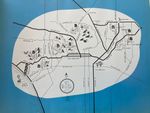
Map of the Case Study Homes in Case Study Houses The Complete CSH Program 1945-1966 by Elizabeth A. T. Smith
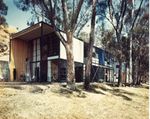
Eames, Case Study House #8 as photographed by Julius Shulman
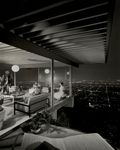
Case Study House #22 as photographed by Julius Shulman
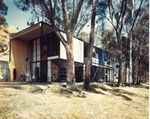
Eames, Case Study House #8 as photographed by Julius Shulman
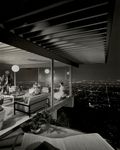
Case Study House #22 as photographed by Julius Shulman
When I heard about the fires last week, I searched for information about these houses, as a number of them are in Pacific Palisades. Remarkably, most, if not all, have so far survived, including the Eames House. Sadly, though, a number of other architectural landmarks in the area have fallen alongside the many lost homes. So, while I celebrate the buildings that have been spared, I mourn the tragic loss of so many others, some of which belonged to our dear friends and colleagues.

An illustration of the nearby landmarks that have survived (yellow) or been lost (red).
One of member of our team in New York, Caleb Ullendorff, recently returned to LA to survey the remains of his childhood home in the center of Pacific Palisades. Here he reflects on growing up in this town within a city and how he is coming to terms with the situation:
When I was in high school my dad told me that the real problem with LA was that there were no seasons, and that without seasons people become unaware of the passage of time. That is because time is measured in change, which is relative. Without seasons to remind someone time is passing perhaps they forget that it is. This idea appealed to me because, as is so often the case with teenagers, I wanted to be contrarian. It was a great response to the idea that LA had perfect weather, that in fact the weather was too much of a good thing, and that LA is the land of the oblivious Lotus Eaters.
I think about inheriting my dad’s outlook on complacency because the Pacific Palisades really was not that far from paradise. Growing up in the Palisades was pure joy, a walkable community that gave me early independence in relationship to my peers who were trapped until 16 years by the necessity of a car. The Palisades had direct access to nature via the trails that poured down from the Santa Monica mountains and the dramatic views of the ocean from the bluffs with ceaselessly impressive sunsets. On clear days you could make out the Channel Islands, on quiet days you could hear the ocean, and on calm nights you could make out the twinkling lights of Rancho Palos Verdes which replaced the stars in a washed-out sky.
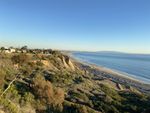
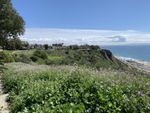
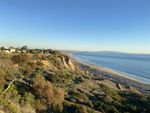
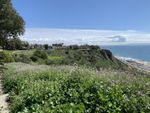
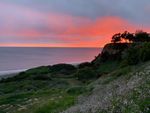
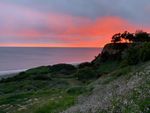
Of course, California does have seasons, as we are beginning to recognize more and more. When summer ended, the winds would always pick up much to my delight because it was something different. The sound of the wind jostling the impossibly tall and skinny palm trees was comforting to me because I knew they could take much worse. They were accustomed to tropical hurricanes and the Santa Anas were light work. In the morning the fronds that fell would be collected for the green trash bins, and the fugitive parakeets would return to the canopies. All of this is to say that the Palisades felt safe, our trees could bend in half without breaking. Descending from the cliffs you were greeted with a sign that read “Tsunami warning zone” indicating that you had reached an elevation that was susceptible to the elements, and that you had left the safety of the Palisades. Even the word palisade refers to a defensive wall.
With increasing frequency in lieu of snow days we would have days off school because of wildfires reducing the air quality. The sun would burn small and red through the haze and there would be a veneer of ash on the car in the morning. Occasionally we would receive evacuation warnings, and once even a mandatory order, but this was seen as overly precautious. The consensus amongst those of us who did not wish to know better was that wildfires do not burn down major cities. The signs were obviously there for those acting without emotion. The insurance companies were pulling out, refusing to offer insurance or hiking rates to extricate themselves. Insurance is essentially betting against yourself, and the odds had changed.
Last week when yet again the evacuation orders were issued, we did not believe it. My parents took only the dogs and I said nothing because it did not occur to me that my birth certificate, my sketchbooks, and the wall that tracked our heights would not be there in the morning.
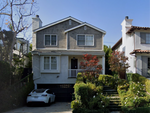
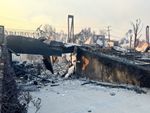
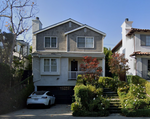
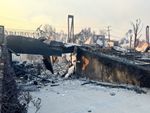
This past summer I spent time in Pella, Greece, excavating the suburban outskirts of the ancient capital attempting to reconstruct the daily life of those that lived there. As we dug down through the topsoil, we first hit collapsed roof tile and I traced my hand along the still visible thumbprints. Underneath the clay tile we found a burn layer, evidence of destruction. There was charred mudbrick, charcoal, and singed pottery. Their house had burned, the roof had collapsed in on itself, and the contents of their life were being brought to the surface. A police officer from the LAPD whom we knew video called us from the steps of our house. He pointed out our basement and the smoldering debris within. The roof had collapsed, and the contents of the house had been deposited into the basement where they were further burned with the basement walls acting as an incineration pit. Maybe in two thousand years someone will comb through our asphalt shingles just below the surface and try to piece our life together, but I hope not. I hope a new house will be built on top of the remains and site will tell a story of rebirth, and that the fresh burn layer that covers the area will be buried and compressed into small dark line of the soil’s stratigraphy.
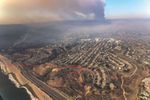
Photo Credit: Robert Gauthie. Markup of an approximation of where Caleb took the cliff photos and the location of his house.
BCV's hearts are with all those affected during this difficult time. AIA Los Angeles has compiled a list of tools, resources, and organizations for those looking to assist communities impacted by the fires.



